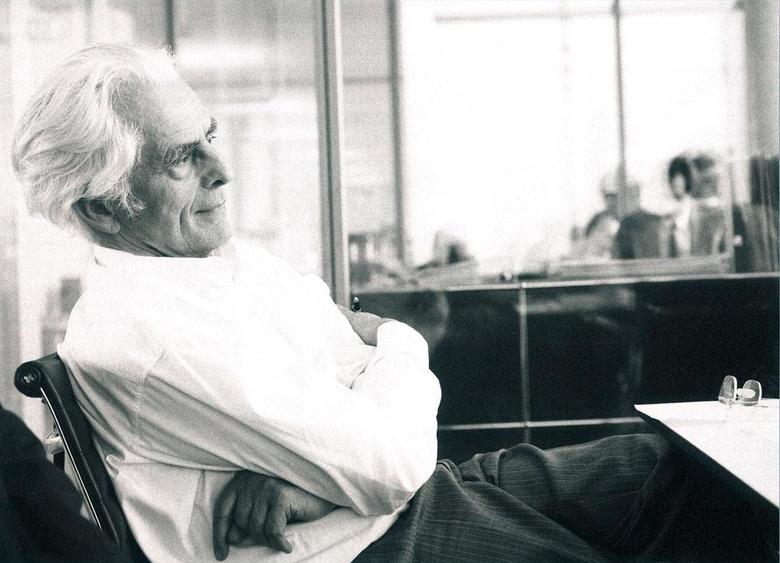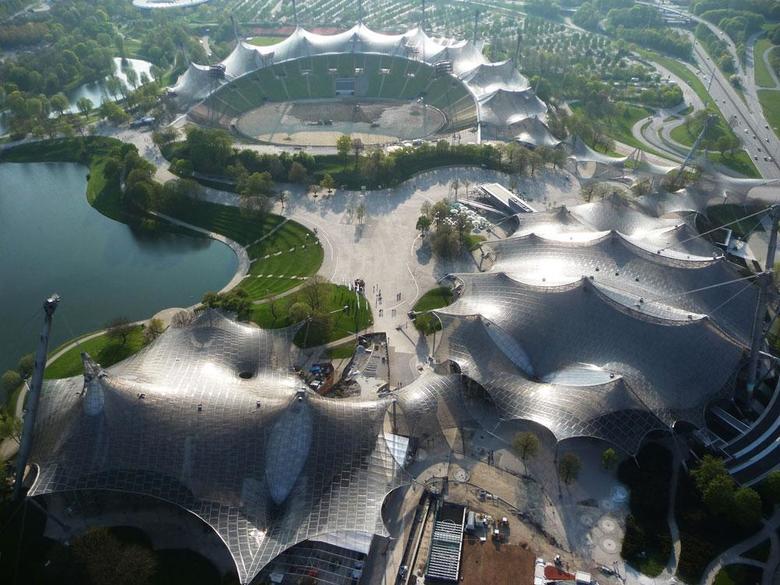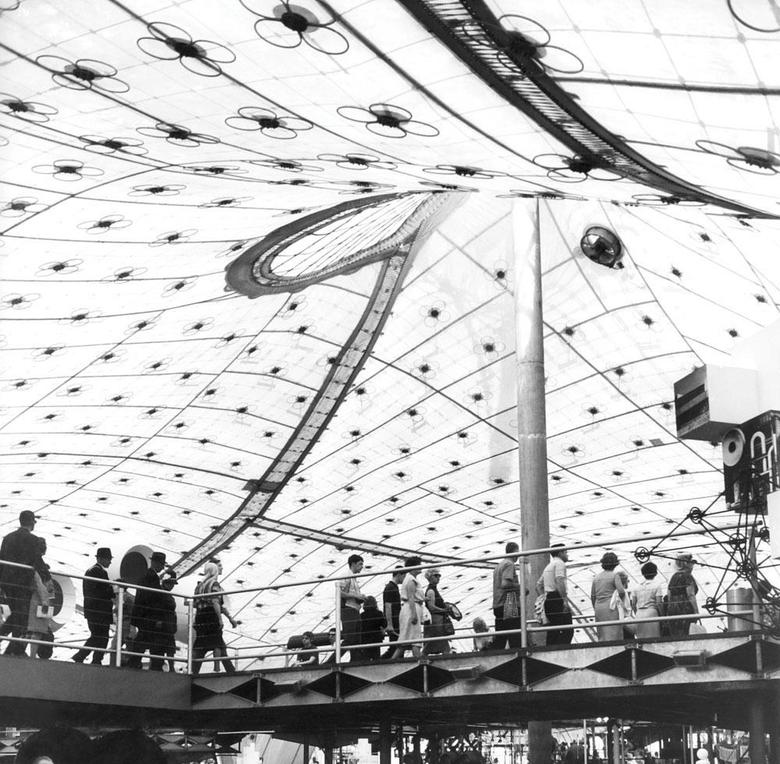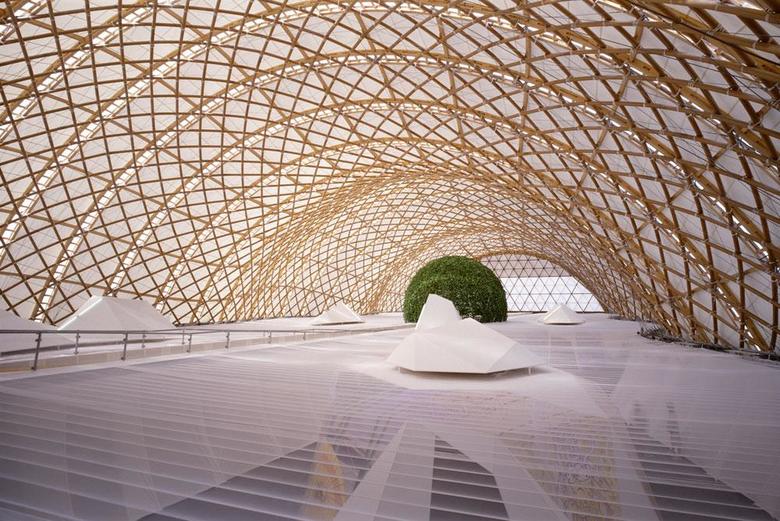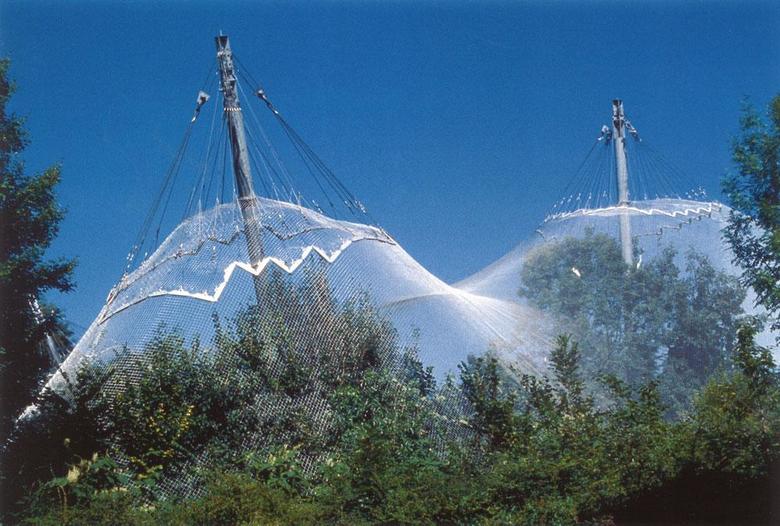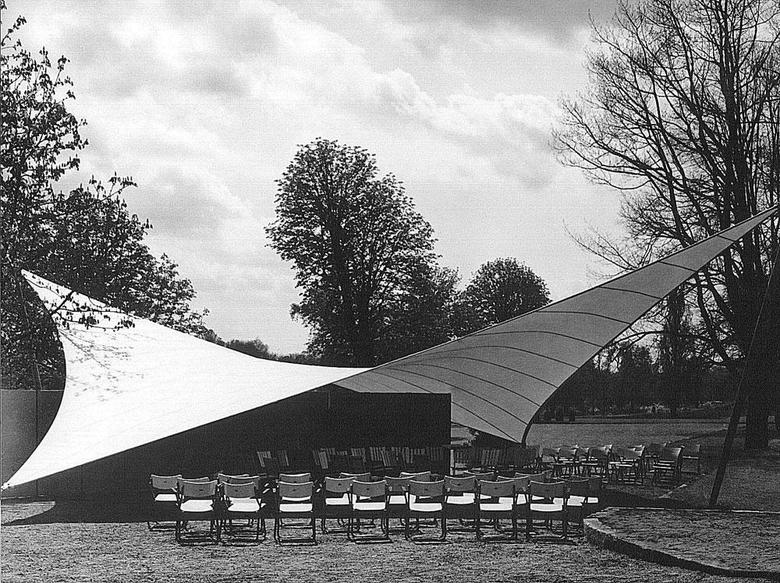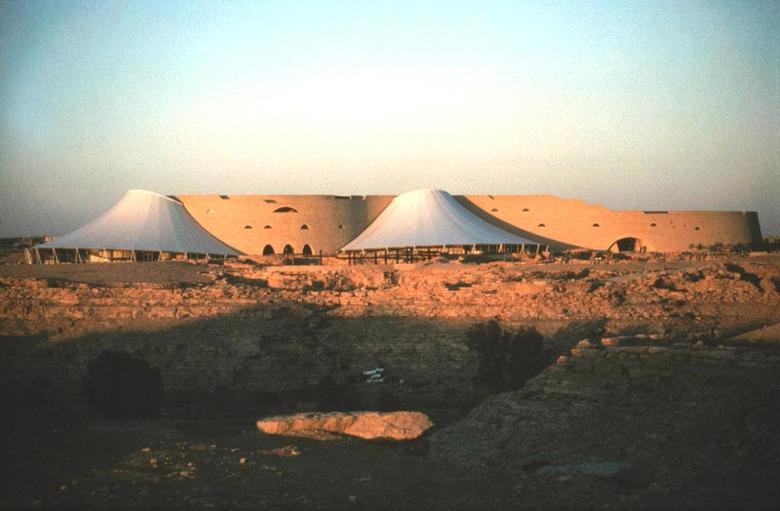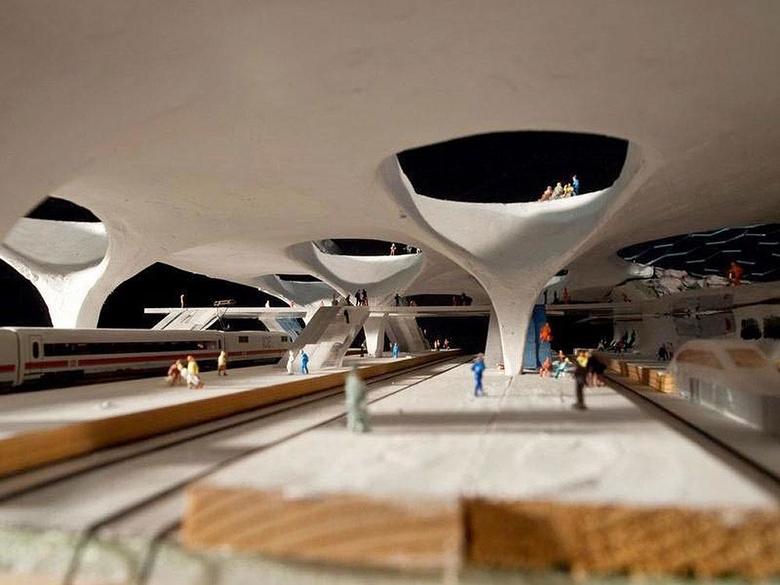Skeletons, Soap Bubbles and Spider Webs
Ulf Meyer
27. marzo 2015
Frei Otto (Photo: ingenhoven architects)
Early in March, architect Frei Otto died at the age of 89. He was announced posthumously as the winner of the 2015 Pritzker Architecture Prize – only the second German architect, after Gottfried Böhm, to receive this honor. Ulf Meyer looks back at the life of a visionary.
After the rigid, weighty formalism of the Third Reich, post-war architecture in West Germany strove above all for lightness and openness, transparency and elegance. More than any other German architect, Frei Otto embodies this endeavor to create lightweight structures that, being derived from nature, make efficient use of materials – designs that are both stunningly beautiful and functional. His work was soon given labels such as “organic”, “Gothic” and “democratic.” Otto died on March 9, almost simultaneously with the award of the 40th Pritzker Prize. In response to his death, the announcement was brought forward by two weeks from the scheduled date. Generously endowed with 100,000 US dollars, the prize is awarded by the foundation of the Pritzker family of Chicago, which owns the Hyatt hotel chain.
As an architect, Otto has long been seen as representing a different, more friendly Germany. His first name, Frei, which also means “free,” matched his thinking. For him, an architect was simultaneously an explorer, an inventor, an engineer, a humanist and, above all, an interdisciplinary team-worker. Otto’s designs are all the product of collaboration. He worked with Rob Krier, Günther Behnisch, Christoph Ingenhoven and Shigeru Ban – some of the most interesting architects of the twentieth century. It says a lot for Otto that he engaged with the work of such very different architects and cooperated with them so successfully. He referred to himself as a “source of ideas” who “has built little and instead devises ‘castles in the air’” – an understatement if ever there was one.
Roof for the 1972 Olympic Games in Munich (Photo: Atelier Frei Otto)
As a young man training for a glider pilot’s license, he came into contact with lightweight construction methods and frame-tensioned membranes for the first time, sparking a lifelong passion. It is these that characterize his most famous work, the tent roofs over the stadium and main sports venues for the 1972 Olympic Games in Munich. Otto’s lightweight roofs are no “lids,” but “the beginning of heaven,” enthused the critics. His oeuvre displays a synthesis of curiosity, experimentation, ingenuity and sensitivity, as well as a great deal of talent. His designs, which followed the principle of “do more with less,” were simultaneously experimental, original and unprecedented. Otto’s sophisticated and almost sculptural lightweight structures, using cable nets, lattice shells, or other tensile constructions, made him one of the most important architects and engineers of the twentieth century. His thinking harmonized structural engineering with spatial composition in a way equaled only by Richard Buckminster Fuller in the 1960s and Santiago Calatrava today. Frei Otto was mostly inspired by natural phenomena such as skeletons, spider webs and bubbles – his works express both lightness and stability, fusing architecture with landscape, wall with ceiling, and interior with exterior.
German Pavilion at Expo 67 in Montreal (Photo: Burkhardt)
After graduating in architecture, Otto gained his doctorate at the Technical University of Berlin in 1954 with a thesis on the subject of “The Hanging Roof.” In it he undertook the first comprehensive analysis of the construction technology of tensile planar structures. In 1964, Otto set up the legendary Institute of Lightweight Structures (IL) at the Technical University of Stuttgart. Three years later, the building that housed it served as a model for the German Pavilion at the 1967 Expo in Montreal, Canada. The pavilion’s construction was based entirely on a cable network, prefabricated in Germany, which could be erected in a very short time on site in Quebec. The result was a modern, innovative and aesthetically epoch-making presentation of Germany at the world’s fair – what a contrast to the third-rate German pavilions at the recent Expos in Nagoya, Shanghai and, this year, Milan!
Multi-Halle in Mannheim, 1975 (Photo: Atelier Frei Otto)
Japanese Pavilion at Expo 2000 in Hannover (Photo: Hiroyuki Hirai)
Otto developed his buoyant roof shapes mostly by experimenting with wire models, which he dipped in lye, knowing that the soap membrane spanning the gaps between them would always take a form that minimized the surface area. He also played successfully with pneumatic structures, lattice shells, fabrics and cable nets to achieve the form that he wanted. On some occasions, he applied the principle of natural form-giving to cable nets by suspending them from supports as a model, which he then turned upside down. He also used this process in designing lattice shells assembled from wooden components, as in the case of the Multihalle in Mannheim. Otto took this motif a step further at the Expo 2000 in Hanover, Germany, when he worked with the architect Shigeru Ban from Tokyo on the construction of the Japanese pavilion. For this they devised a barrel vault made of recyclable cardboard tubes, creating a space with a unique character and atmospheric lighting.
Aviary in the Munich Zoo at Hellabrunn, 1980 (Photo: Atelier Frei Otto)
Sail roof at the Federal Garden Show in Kassel, 1955 (Photo: Atelier Frei Otto)
There are, however, only a few permanent buildings by Otto in Germany itself. Munich’s former Olympic roof structure still attracts admiring visitors today, as does his airy and almost invisible large aviary in the city’s Hellabrunn Zoo. They both show how effectively he could “get roofs to float.” His impressive tent roofs for temporary pavilions at national garden festivals and other events in Kassel, Cologne and Hamburg have long since been taken down. The apparently small extent of Otto’s surviving oeuvre is due not only to the temporary nature of his pavilion commissions, but also to the fact that he built widely in the Middle East, especially in Saudi Arabia – which was not unusual for Western architects during the 1970s and 1980s. The Conference Center in Mecca from 1974 and the Tuwaiq Palace cultural centre in Riyadh from a decade later, for example, are permanent structures that few German critics are likely to have seen. One important work by him is still due to be completed in Germany, albeit posthumously: the shapely concrete skylights that are currently being constructed in Stuttgart as the most eye-catching component of the city’s new underground main station. These are based on an idea of Otto’s, which is now being realized by the architect Christoph Ingenhoven.
Diplomatic Club in Saudi Arabia (Photo: Atelier Frei Otto Warmbronn)
Working model of light scoops for the main station Stuttgart (Photo: saai)
It is thirty years since the Pritzker jury in Chicago last considered a German architect – in the person of Gottfried Böhm – worthy of the prize. The long sequence of awards going to East Asia, especially Japan, has been interrupted for once. Frei Otto certainly deserves this award and it will contribute to a greater appreciation of his unique oeuvre, not just in his home country. That the award of the Pritzker Prize coincided with his death is a curious fact that will hopefully provide an incentive to give younger members of the profession opportunities to achieve excellence in architecture.
Ulf Meyer studied architecture in Berlin and Chicago. He has worked for Shigeru Ban Architects in Tokyo and has taught at Kansas State University, the University of Nebraska-Lincoln, and Tamkang University in Taiwan. He currently lives and works in Berlin as an architectural journalist.
This article originally appeared in German in the German-Architects eMagazin.
